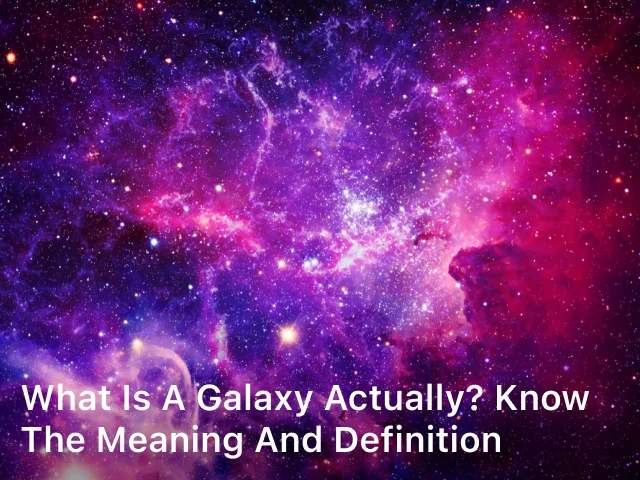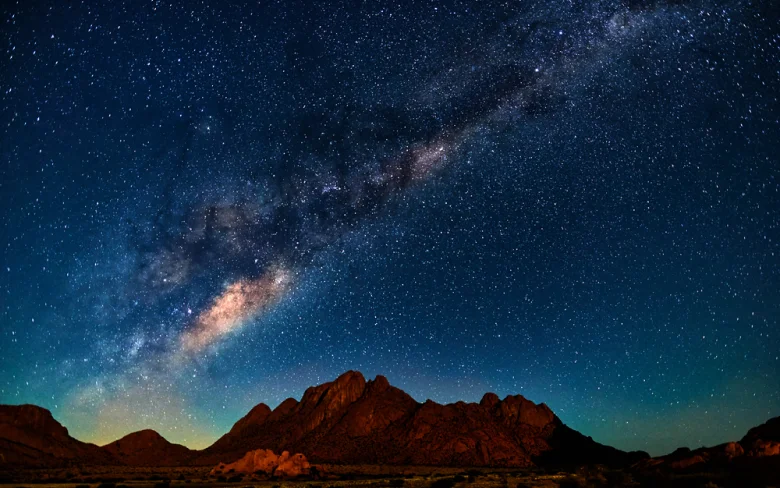What is a Galaxy Actually? Know The Meaning and Definition

naturepreservehub.com. What is a Galaxy Actually? Know The Meaning and Definition – Discover the true meaning and definition of a galaxy in this informative article. Uncover the mysteries of the universe and learn all about What is a Galaxy Actually.
Have you ever looked up at the night sky and wondered, “What is a Galaxy Actually?” If so, you’re not alone. Galaxies are some of the most intriguing and captivating objects in the cosmos, and understanding their true nature is a topic of great curiosity for many.
In this comprehensive article, we will delve deep into the world of galaxies, providing you with all the information you need to grasp the meaning and definition of these celestial entities.
What is a Galaxy?
A galaxy is an immense, cosmic structure that serves as one of the fundamental building blocks of our universe. These colossal assemblies of stars, planetary systems, interstellar gas, dust, and dark matter are bound together by the force of gravity.
Galaxies are the building blocks of the universe itself, and understanding their true nature is essential for comprehending the vast cosmic tapestry in which we exist.
As we explore the concept of galaxies and delve deeper into the question “What is a Galaxy?” we find that these cosmic entities come in a variety of forms, and they play a crucial role in shaping the structure and evolution of the cosmos.
Keep Reading : What Exactly is a Humanoid Mouse?

Types of Galaxies
Galaxies come in a wide range of shapes and sizes, and they are not all created equal. The most common types of galaxies include:
1. Spiral Galaxies
Spiral galaxies are characterized by their distinct spiral arms that wind outward from a central core. The Milky Way, our home galaxy, is a prime example of a spiral galaxy. These galaxies are often teeming with vibrant star-forming regions, and they are known for their elegant, pinwheel-like appearance.
2. Elliptical Galaxies
In stark contrast to the organized spiral structure, elliptical galaxies appear as elongated or nearly spherical blobs of stars. They are often older and contain a population of aging stars. These galaxies lack the dynamic spiral arms seen in their counterparts.
3. Irregular Galaxies
As the name suggests, irregular galaxies do not conform to the structured patterns of spirals or ellipticals. Instead, they exhibit an unstructured, chaotic appearance.
Irregular galaxies can vary greatly in size and shape, and they often result from gravitational interactions or disturbances from neighboring galaxies.
Keep Reading : Fun Facts about Hamsters You Should Know
Structure of a Galaxy
To fully grasp “What is a Galaxy Actually,” it’s crucial to understand the typical structure of a galaxy. While the specific details can vary from one type to another, galaxies generally consist of several key components:
Core
At the center of a galaxy lies the core, a dense and often bustling region that may contain a supermassive black hole. The core is the gravitational anchor around which the rest of the galaxy revolves.
Halo
The halo is an extended, spherical region surrounding the core. It is typically composed of older stars and dark matter. Dark matter is an enigmatic substance that exerts gravitational influence but does not interact with light.
Disk
The disk is a flattened region that extends from the core, and it contains most of the galaxy’s stars. In spiral galaxies, this is where the graceful spiral arms are located.
Arms (for spiral galaxies)
In spiral galaxies, the arms are the most distinctive feature. They wind outward from the core and are the primary sites of active star formation.
Irregular regions (for irregular galaxies)
In irregular galaxies, there is no structured disk or arms. Instead, these galaxies have a patchy, uneven distribution of stars and other cosmic matter.
Keep Reading : What is The Sun’s Role in The Water Cycle?
What is Inside a Galaxy?
Beyond their structural components, galaxies are filled with a rich array of celestial elements that contribute to their incredible diversity and beauty. These components include:
Stars
Galaxies can house anywhere from millions to trillions of stars. Each star is a self-contained fusion reactor that emits light and heat.
Planets
Planets, along with their moons and other celestial bodies, can orbit the stars within a galaxy. Our own solar system, with Earth and its neighbors, is an example of planetary systems within a galaxy.
Nebulas
Nebulas are vast, colorful clouds of gas and dust where stars are born. They can be found throughout galaxies, and they serve as cosmic nurseries for the birth of new stars.
Black Holes
Some galaxies contain supermassive black holes at their cores. These enigmatic cosmic objects possess immense gravitational pull and can influence the structure and dynamics of their host galaxies.
Dark Matter
Dark matter, though invisible and mysterious, comprises a significant portion of a galaxy’s total mass. Its presence is deduced by its gravitational effects on the visible matter within galaxies.
Keep Reading : This is The Reasons Behind Why do Dogs Lick Their Nose?
Galaxy Formation and Evolution
The understanding of “What is a Galaxy Actually” is not complete without delving into the formation and evolution of these celestial giants. Galaxies, like all things in the universe, are not static entities; they undergo transformations over time.
Galaxy Formation Theories
The Big Bang Theory
The prevailing theory of the universe’s origin, the Big Bang Theory, also provides insights into galaxy formation. According to this theory, galaxies began forming shortly after the Big Bang as the universe expanded and cooled.
Hierarchical Galaxy Formation
This theory suggests that galaxies formed through a hierarchical process, where smaller structures merged to create larger galaxies. It explains the diverse sizes and shapes of galaxies we observe today.
Protogalactic Cloud Hypothesis
This hypothesis posits that galaxies formed from massive clouds of gas and dust, known as protogalactic clouds, which collapsed under the influence of gravity.
Galaxy Clusters
Galaxies are not isolated in the cosmos. They often congregate in groups called galaxy clusters. These clusters are interconnected by gravitational forces and can contain hundreds or even thousands of galaxies. Galaxy clusters are the largest gravitationally bound structures in the universe.
Keep Reading : What is The Source of Energy in The Water Cycle?
Life Cycle of a Galaxy
Just as living organisms go through stages of life, galaxies also have a life cycle. This cycle involves:
- Birth of a Galaxy
Galaxies are born through a complex interplay of gravitational forces, gas clouds, and other cosmic processes. The exact mechanisms depend on the formation theory, as discussed earlier.
- Maturity and Stability
Once formed, galaxies settle into a state of relative stability, with stars orbiting the galactic center and galaxies maintaining their overall shape. During this phase, they may undergo periods of star formation and evolution.
- Galaxy Death
Over incredibly long timescales, galaxies may exhaust their gas reservoirs, deplete their ability to form new stars, and slowly fade away. In some cases, galaxies may collide with others, leading to dramatic interactions and transformations.
In conclusion, galaxies are not merely points of light in the night sky; they are the intricate cosmic entities that shape the very fabric of our universe. Understanding “What is a Galaxy Actually” involves recognizing their diverse forms, exploring their structural elements, and uncovering their formation and evolution.
These colossal structures, each with its unique history and characteristics, continue to captivate the imaginations of astronomers and stargazers alike, making galaxies a focal point in our quest to comprehend the mysteries of the cosmos. So, the next time you look up at the stars, you’ll do so with a deeper appreciation for the galaxies that adorn the canvas of the night sky.





